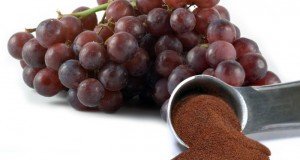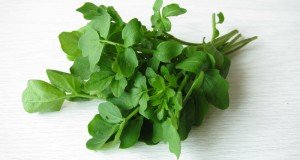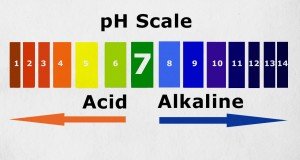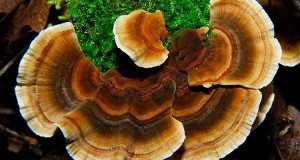LOWER your risk of death from cardiovascular disease with a special pigment inside berries
(NaturalHealth365) Cardiovascular disease, a leading cause of death in the U.S., currently affects an astonishing 84 million Americans. Yet, even if your doctor isn’t telling you, we know that a special pigment in berries can help us to avoid becoming a heart disease death statistic.
For example, an extensive scientific review demonstrates that anthocyanin – a natural plant pigment found in berries – does provide antioxidant effects and significant protection from chronic diseases.
In fact, researchers say that anthocyanin could help lower the risk of potentially life-threatening cardiovascular conditions – helping to protect untold millions of people from heart attack, stroke and artery-clogging atherosclerosis.
And, just to clarify: anthocyanin is found in many (colorful) fruits and vegetables. Unfortunately, a scant 32 percent of American adults meet the goal advised by The Office of Disease Prevention and Health Promotion. They suggest eating at least two daily servings of fruit – along with three servings of vegetables.
Adolescents fare even worse, with only 13 percent eating sufficient fruit. If you’re serious about lowering your risk of cardiovascular disease – I urge you to keep reading.
How anthocyanin LOWERS the risk of cardiovascular disease
According to a systematic review published in Critical Reviews in Food Science and Nutrition, British researchers evaluated 19 different studies involving 602,000 participants living across North America, Europe and Australia. Their goal was to examine the effects of dietary anthocyanins on heart disease and cardiovascular events, including stroke, heart attacks and deaths due to cardiac-related causes.
The team found that participants with the highest dietary anthocyanin intake had a 9 percent lower risk of developing coronary heart disease, and an 8 percent lower risk of death due to heart disease – when compared with those who ate the lowest amounts of anthocyanin.
Calling the review the “largest evaluation of the association between anthocyanin intake and risk of heart disease,” study co-author Professor Glyn Howatson noted that evidence had been accumulating in recent years to suggest that anthocyanins might be “especially valuable” for promoting cardiovascular health.
Anthocyanins are a group of flavonoids, or natural plant compounds, these give fruits and vegetables their reddish, purple or bluish color. They are found in particularly rich supply in intensely-colored berries such as raspberries, blackberries, blueberries and bilberries.
Other subclasses of flavonoid include flavones, flavanones and anthoxanthins. However, anthocyanins – with over 400 different types identified – are the largest group of these natural pigments.
And, they could very well be the most beneficial.
Worried about high blood pressure? Anthocyanins can naturally relax arteries and reduce inflammation
In a 2012 study involving close to 1900 women aged 18 to 75 and published in The American Journal of Clinical Nutrition, researchers examined associations between flavonoid intake and measures of arterial stiffness, blood pressure, pulse wave velocity and atherosclerosis.
Pulse wave velocity, a measurement of waves of pressure as they move through blood vessels, is considered the “gold standard” of measurement tools to assess risk of heart disease. In addition, measurement of central blood pressure is considered a strong predictor of atherosclerosis.
Once again, anthocyanins distinguished themselves — by lowering both measurements.
Researchers noted that higher anthocyanin intake was linked to significantly lower systolic blood pressure (the top number in the measurement – which assesses the amount of pressure in the arteries during the heart’s contraction). Anthocyanin intake was also linked with lowered arterial pressure and pulse wave velocity.
The team’s research confirmed findings of earlier anthocyanin trials – particularly a study in which eight weeks of blueberry supplementation lowered systolic blood pressure by 6 percent and diastolic blood pressure by 4 percent.
In addition to lowering blood pressure, anthocyanins have been shown to affect signaling pathways involved in inflammation. This is significant because inflammation plays a pivotal role in the initiation and development of atherosclerosis.
Anthocyanins also improve vascular function by increasing the bioavailability of beneficial nitric oxide. And, animal studies show that anthocyanins directly inhibit the development of atherosclerosis – even suppressing development of atherosclerotic lesions.
And, there’s more good news about anthocyanins.
In a 2011 article published in Nutrition Reviews, the authors noted that anthocyanin conferred benefits both in healthy subjects and in those with risk factors for heart disease alike.
These benefits included improvements in LDL oxidation, antioxidant capacity and glucose metabolism.
Boost your intake of anthocyanin by eating intensely-colored fruits and berries
According to a large study, American adults who eat fruit mainly consume apples, pears, bananas, melons and citrus fruits – in that order. But, whatever their other virtues and valuable nutrients, these fruits are not particularly high in anthocyanins.
However, blackberries, raspberries, dark cherries, bilberries, grapes, strawberries and acai berries can fill the bill as good sources of the disease-fighting flavonoid. And, yes, certain vegetables including: sweet potatoes, red cabbage and eggplants are also good sources.
Eating these fruits and vegetables in healthy quantities may be one of the most important things you can do to help ensure protection against heart disease. Of course, we encourage you to opt for organic produce – and make sure to consume the fruit and berry skins, in which the anthocyanins are more highly concentrated.
Anthocyanin-rich berries and grapes also contain antioxidants like, vitamin C and E, folic acid, the anticancer mineral selenium, alpha and beta carotene (more beneficial fruit pigments) and important polyphenols such as quercetin and resveratrol.
Keep in mind, for heart health, you do not have to stuff yourself on fruits and berries. According to the authors of the newest review, the intakes of flavonoids associated with their findings – those found in one to two portions of berries a day – should be easily achievable.
Of course, a bit more won’t hurt. So, get out to your local (organic) farmers market or start growing your own produce – and reap the rewards.
Sources for this article include:
HopkinsMedicine.org
MedicalNewsToday.com
Academic.oup.com
NIH.gov
Health.gov











